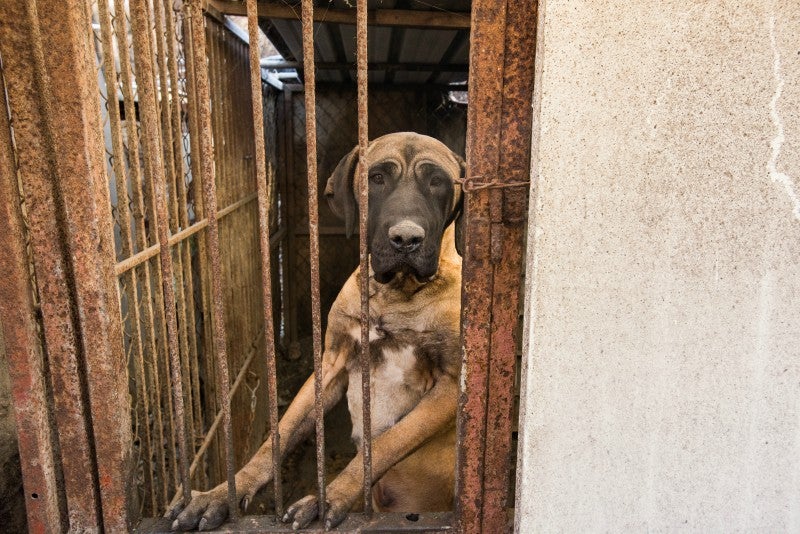
Update: On January 9, 2024, South Korea’s National Assembly voted through a ban on the dog meat industry, making the breeding, slaughter and sale of dogs and dog meat for human consumption illegal from 2027.
In South Korea, dogs are intensively farmed for human consumption. They are given little food, usually no water, and live outdoors in small cages with no protection from the hot summers or brutally cold winters. Many suffer from disease and malnutrition and all are subjected to daily, extreme neglect. The methods used to kill the dogs are very cruel—electrocution is most common.
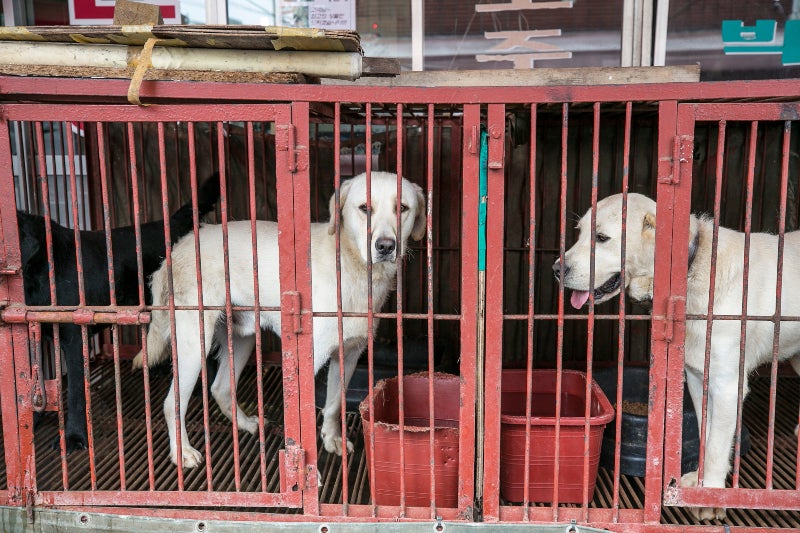
The majority of South Koreans do not routinely eat dog meat. Dog meat is mostly eaten by older, male citizens who have the misguided belief that it is beneficial for health when consumed either as a soup called “boshintang”—which is believed by some to invigorate the blood and reduce lethargy—or as a tonic (gaesoju), which is sold in traditional medicine shops. Dog meat is particularly popular during the summer months, especially during Bok Nal—the three hottest days between July and August when 70 to 80 percent of the dog meat is consumed.
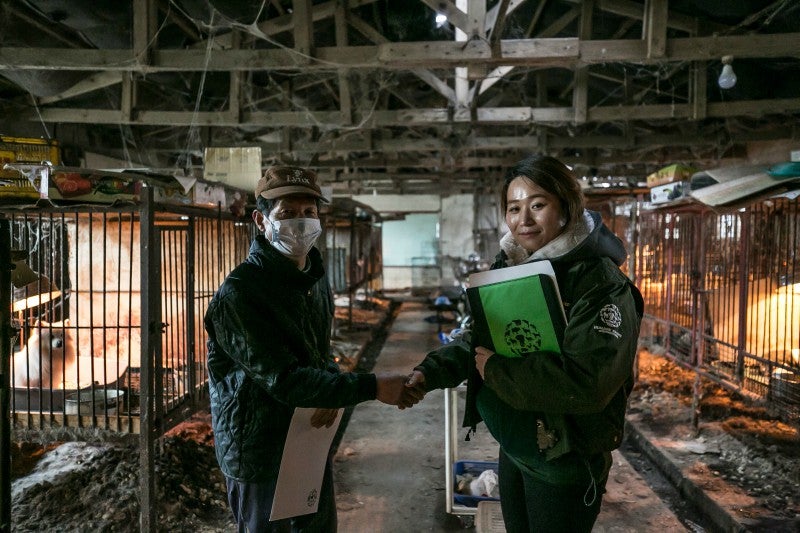
Models for Change: Closing dog meat farms
Since 2015, HSI has worked on the ground in South Korea to shut down more than a dozen farms and rescued more than 2,500 dogs who have found loving homes in the United States, Canada, the United Kingdom and the Netherlands. However, these farm closures are only a small part of our strategic and ambitious program to phase out dog meat farming in South Korea.
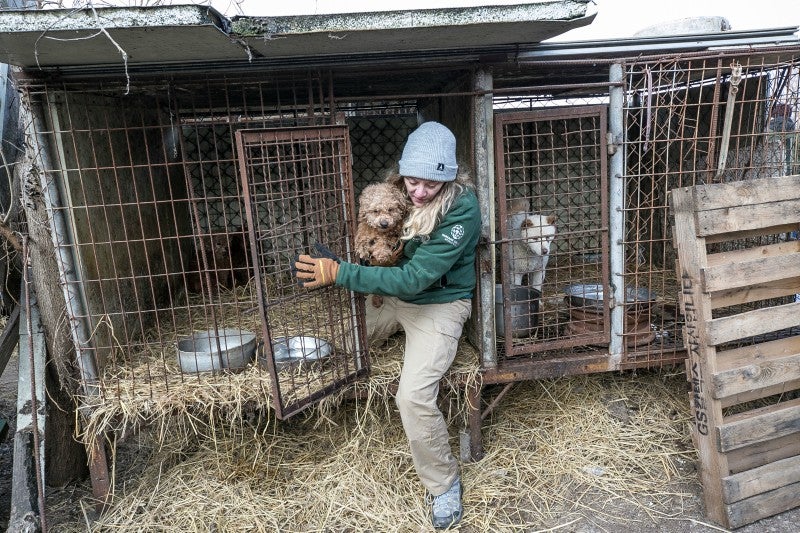
What sets HSI’s strategy apart
HSI works collaboratively with dog meat farmers who wish to leave the controversial industry but don’t have the means to stop. We don’t simply buy the dogs, leaving empty cages to be filled again. We sign a legally binding contract with each farmer to permanently shut down each farm and transition the dog meat farmer to a more profitable—and humane—business model, such as medicinal herb farming, water parsley farming, or blueberry farming. Our working model for change helps us demonstrate to the South Korean government that the dog meat industry can be phased out in cooperation, rather than conflict, with dog meat farmers.
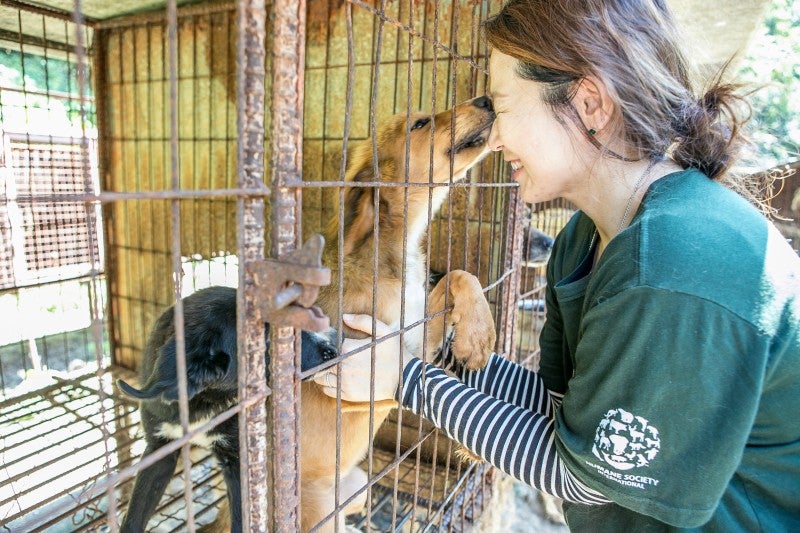
Our broader campaign
Our goal is a ban on the consumption of dog meat and the cruel industry which supplies the dogs within the next 10 years. We work on the ground with local organizations and activists to create culturally sensitive solutions that will change public perceptions and influence policy makers in favor of reform. Dog meat farm closures are part of HSI’s strategy to facilitate the political and societal circumstances to make this possible.
Many people in South Korea love and keep pet dogs. However, there is a misconception held by some that “meat dogs” are different from “pet dogs.” We campaign to show the public that all dogs suffer in the same ways and are all deserving of love. Another goal of our campaign is to encourage pet adoption. Currently, the few shelters in South Korea are overcrowded and under-resourced. Pet adoption, particularly of large dogs, is uncommon and older dogs are at risk of being discarded on farms since there are no shelters to take them.
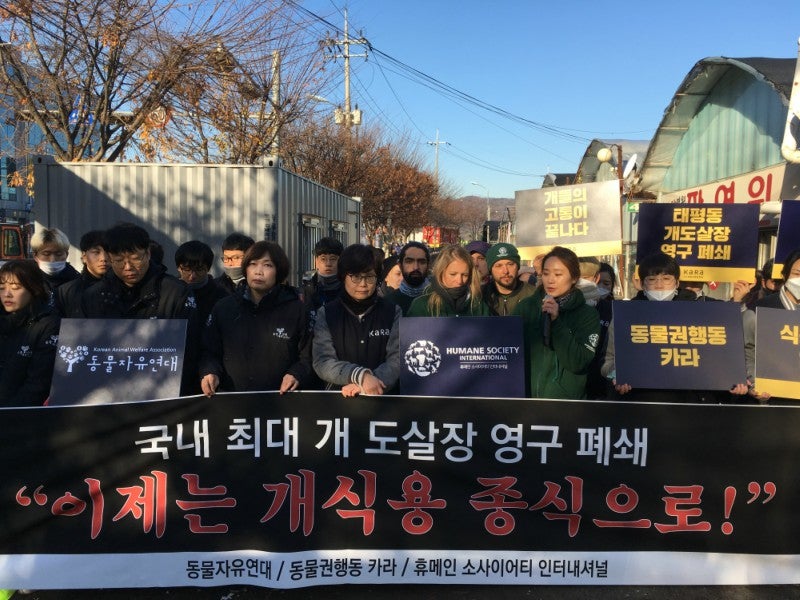
Progress/An industry in decline
Our dog farm closures demonstrate that there is a willingness within the industry to phase out this trade. HSI works with leading Korean animal groups, including Korea Animal Rights Advocates (KARA), Korean Animal Welfare Association (KAWA) and LIFE. Together, we have helped close some of the country’s largest dog slaughterhouses and dog meat markets.
According to the Korea Times, “Fewer people in Seoul are eating dog, as nearly 40 percent of the restaurants selling dog meat have closed over the last 10 years.” A 2020 opinion poll in South Korea commissioned by HSI and conducted by Nielsen, shows growing support for a ban on dog meat consumption, with 84 percent of those polled saying they don’t or won’t eat dog, and almost 60 percent supporting a legislative ban on the trade.
A growing number of South Korean animal rights activists are dedicated to ending the dog meat trade. Local authorities are cracking down on the industry, and new legislation applied stricter health and safety requirements on the dog farms. At a higher level, the Supreme Court concluded that killing dogs by the common method of electrocution breaches animal welfare law, and the President’s Blue House pledged to consider removing dogs and cats from the legal definition of livestock. Change is taking place in South Korea like never before and HSI is proud to work alongside our Korean partners to support their work in developing practical, culturally sensitive solutions to animal welfare concerns.
